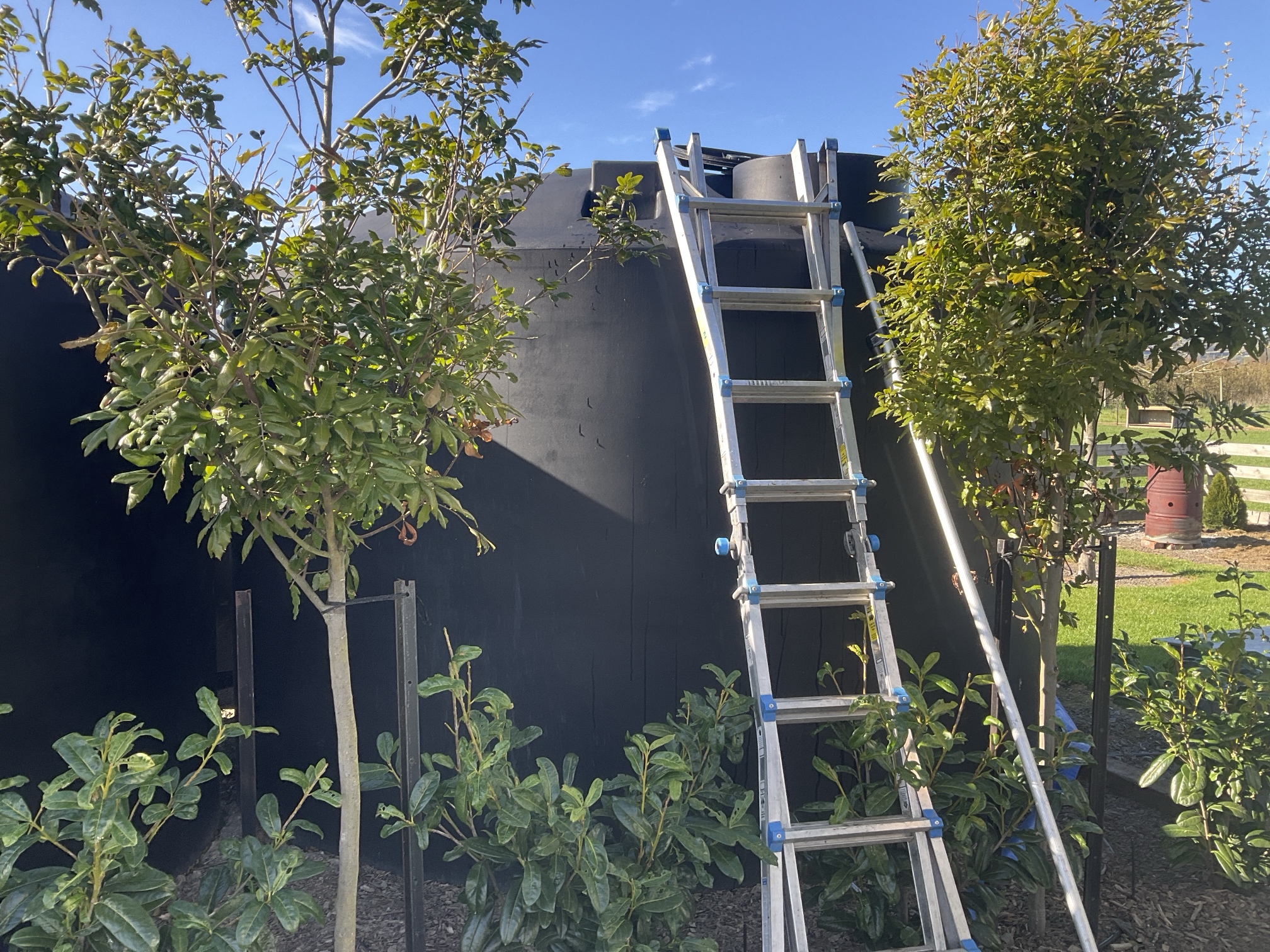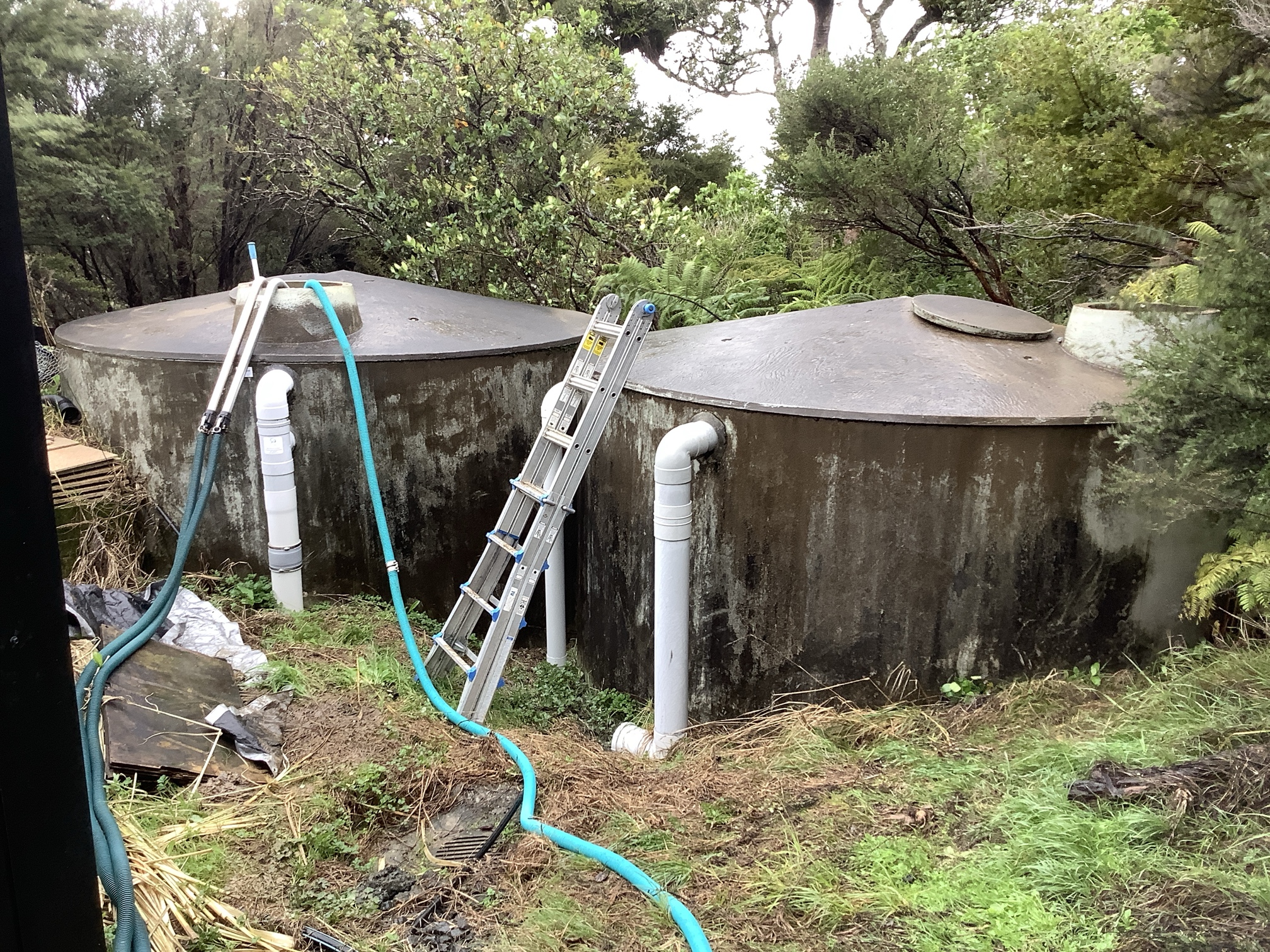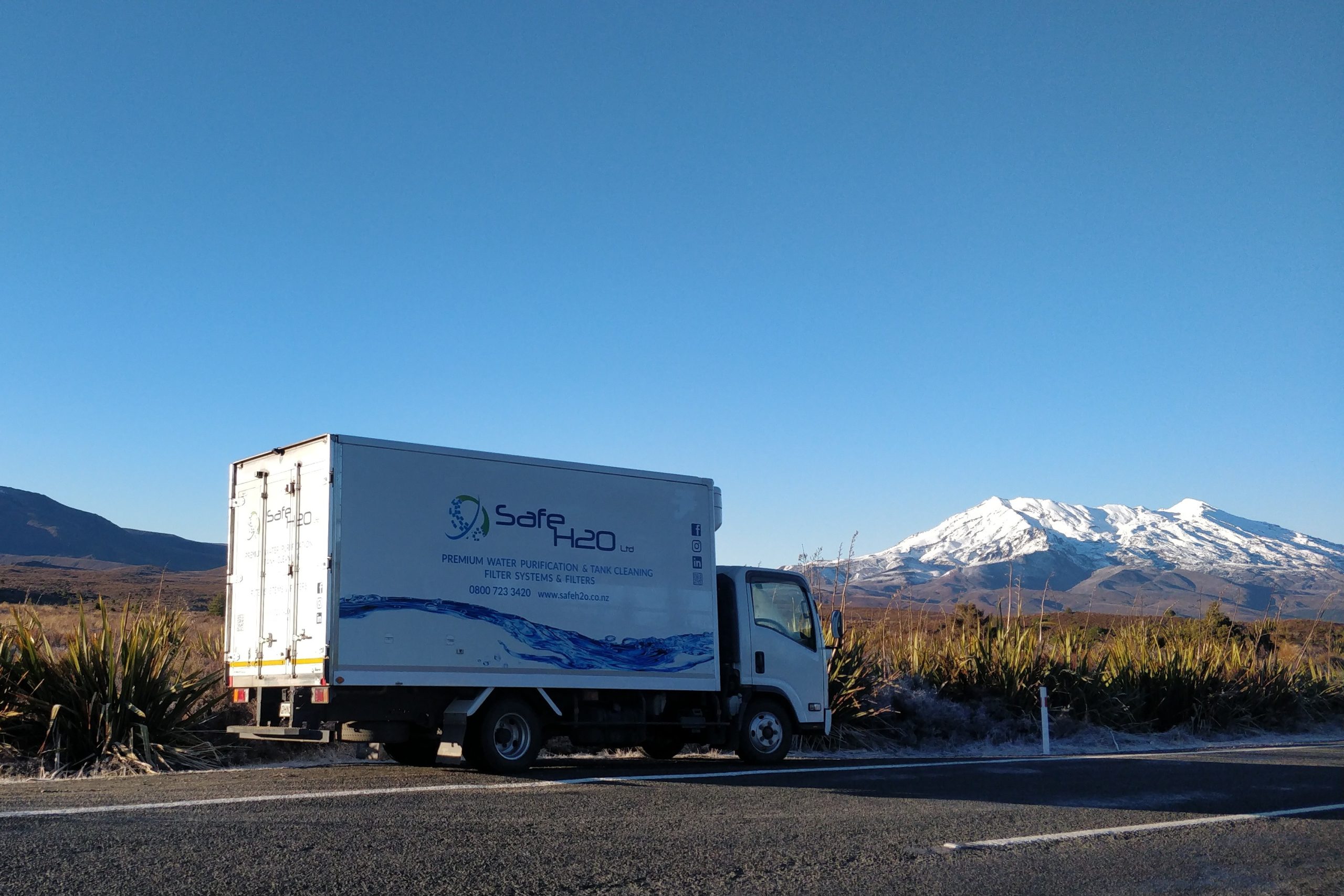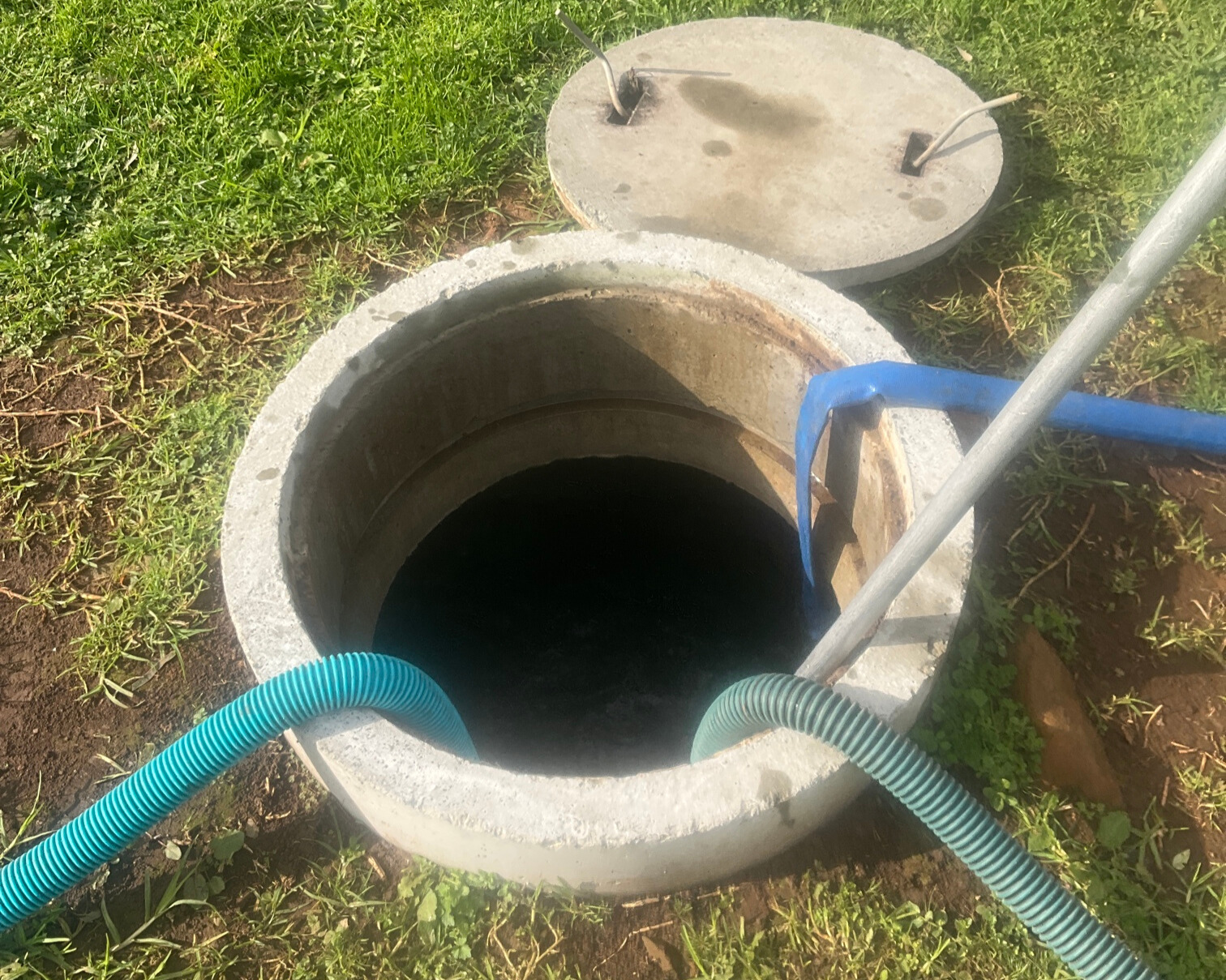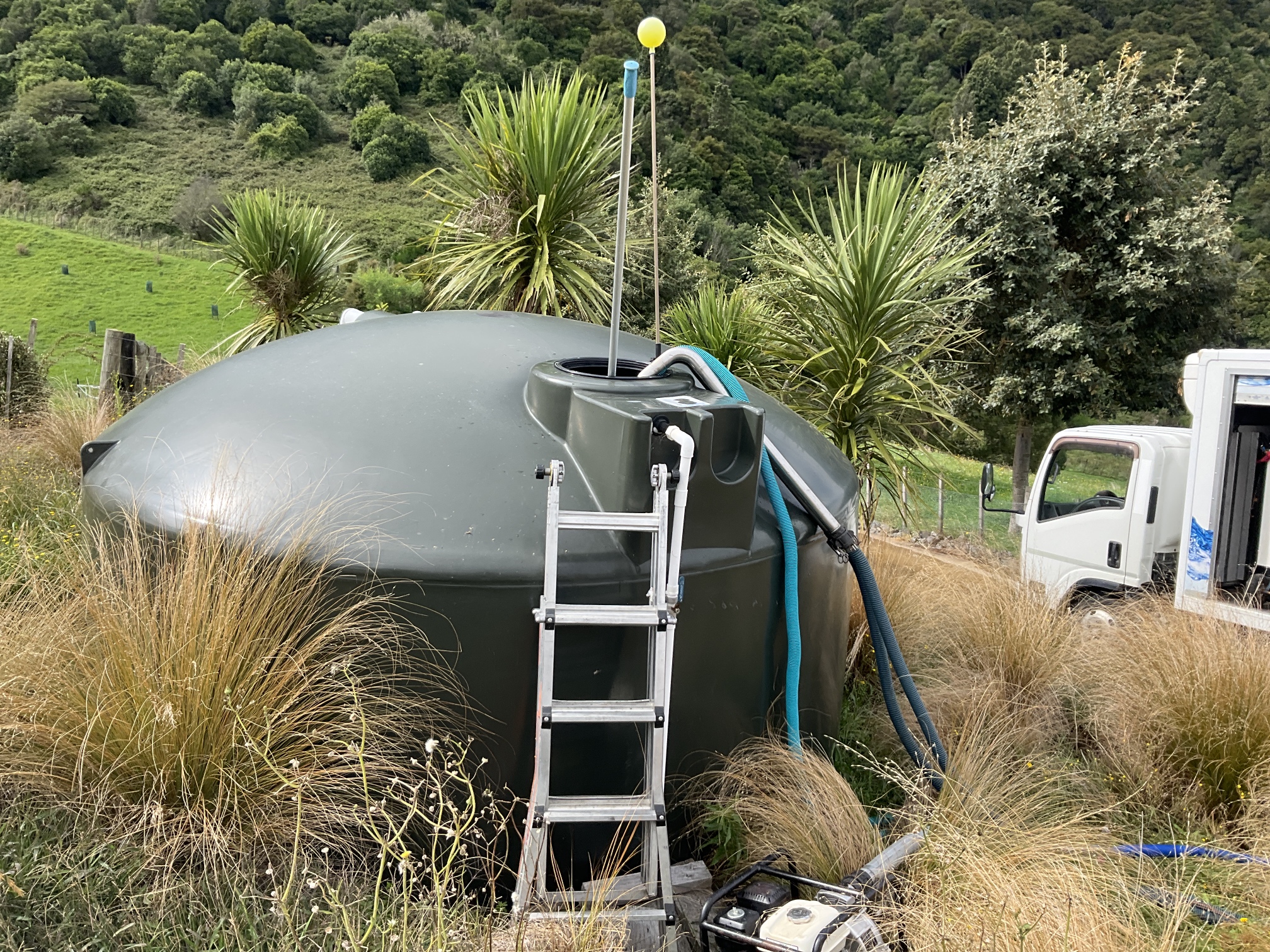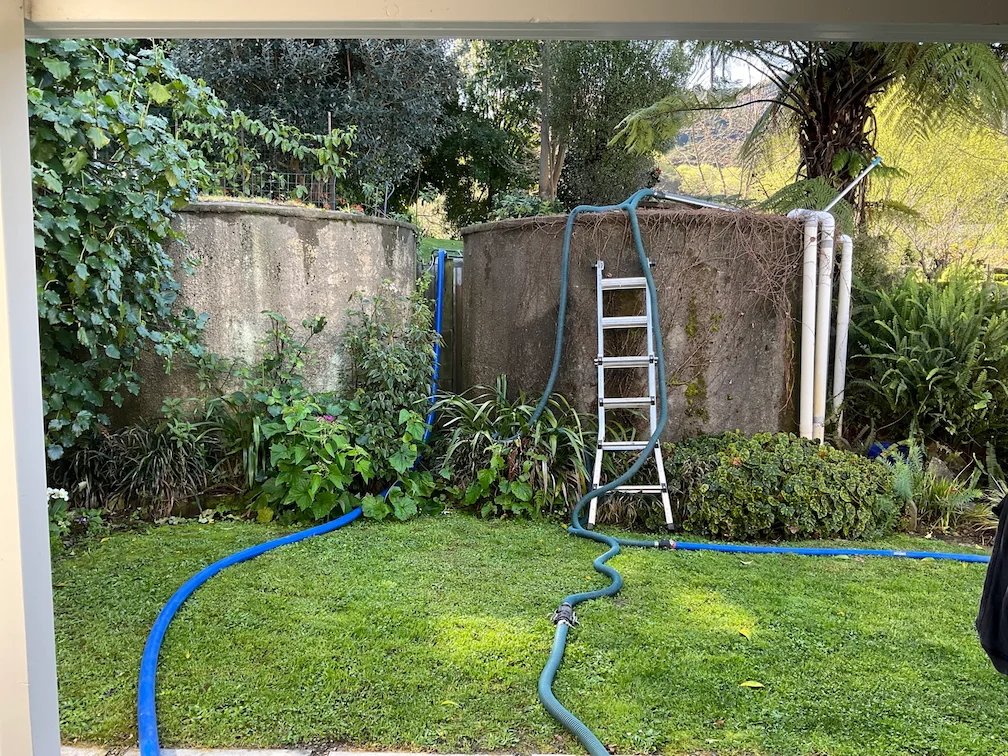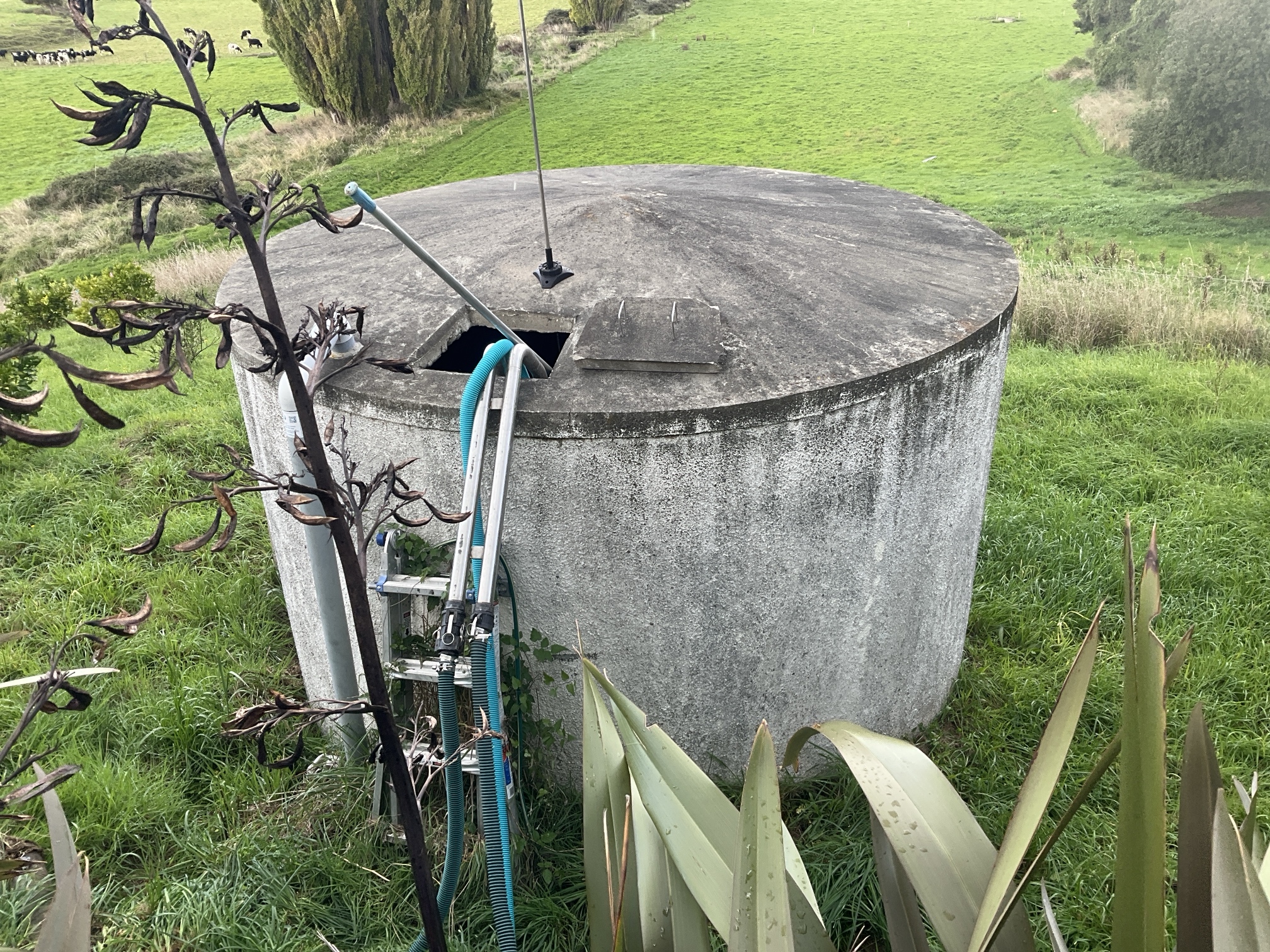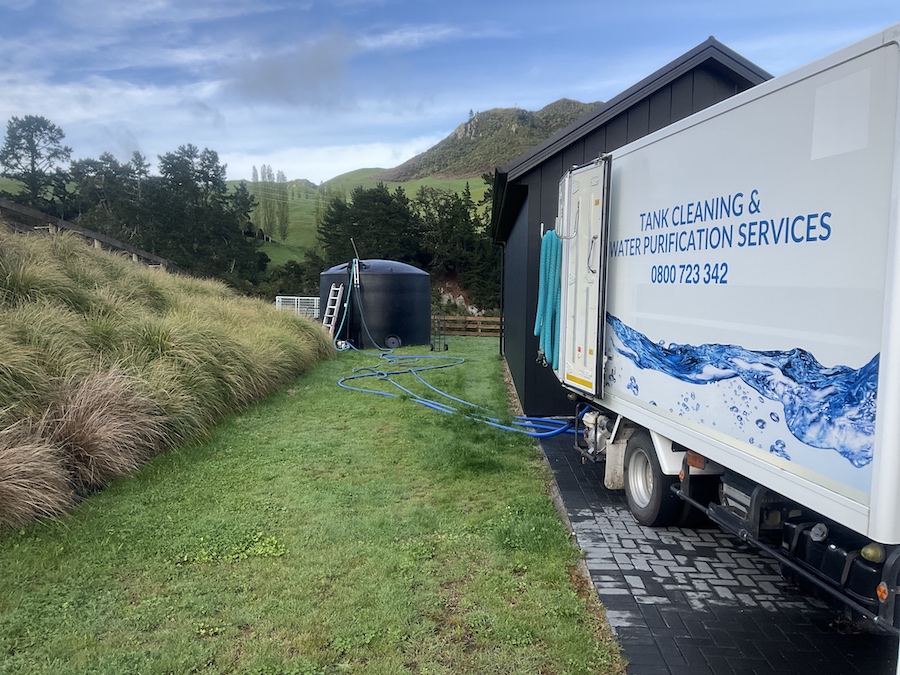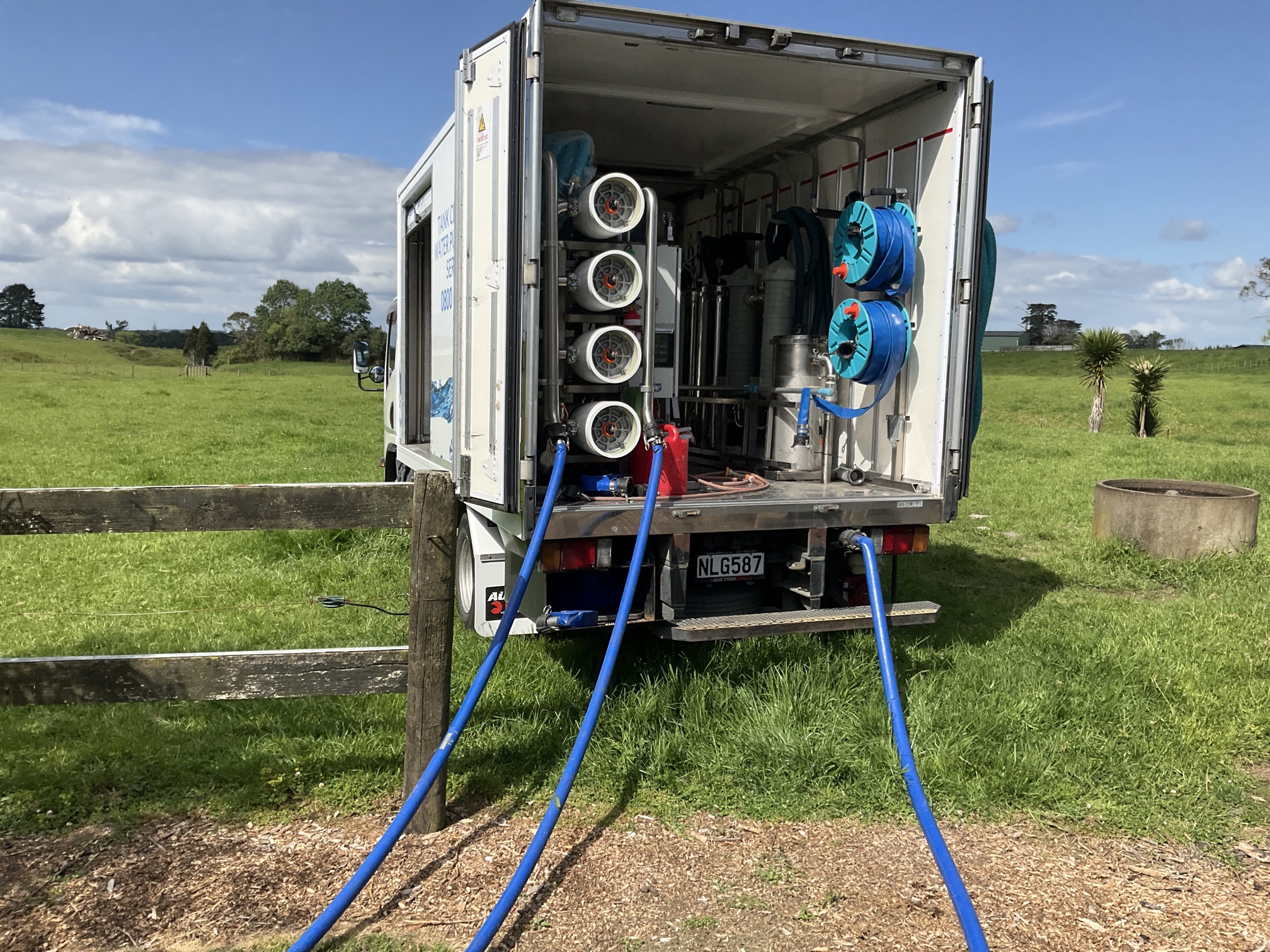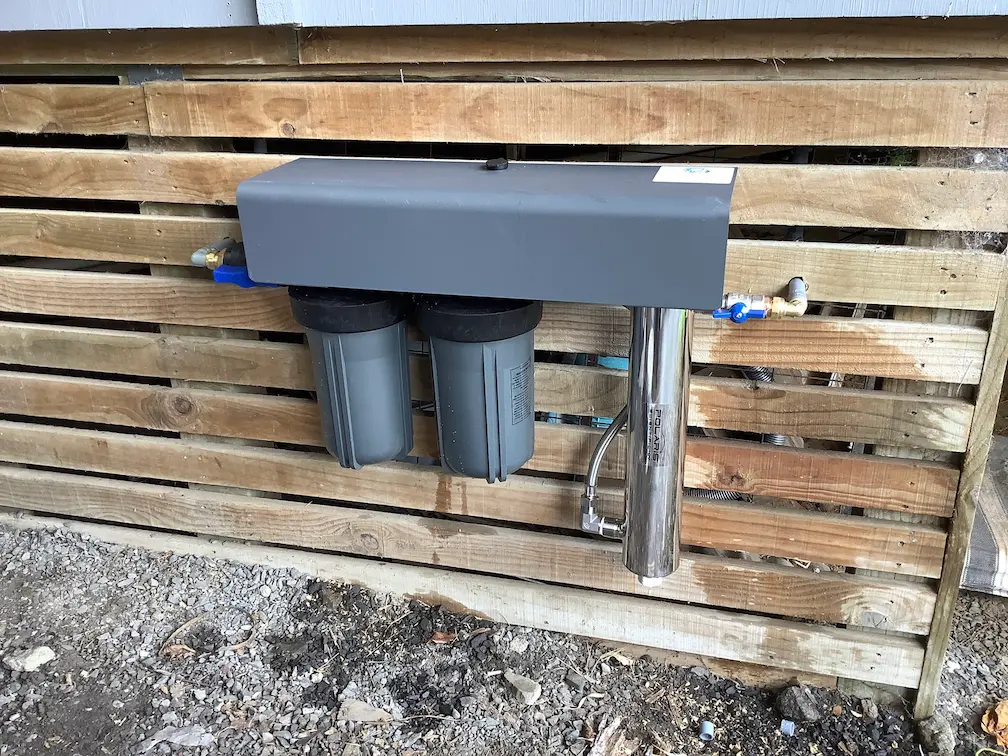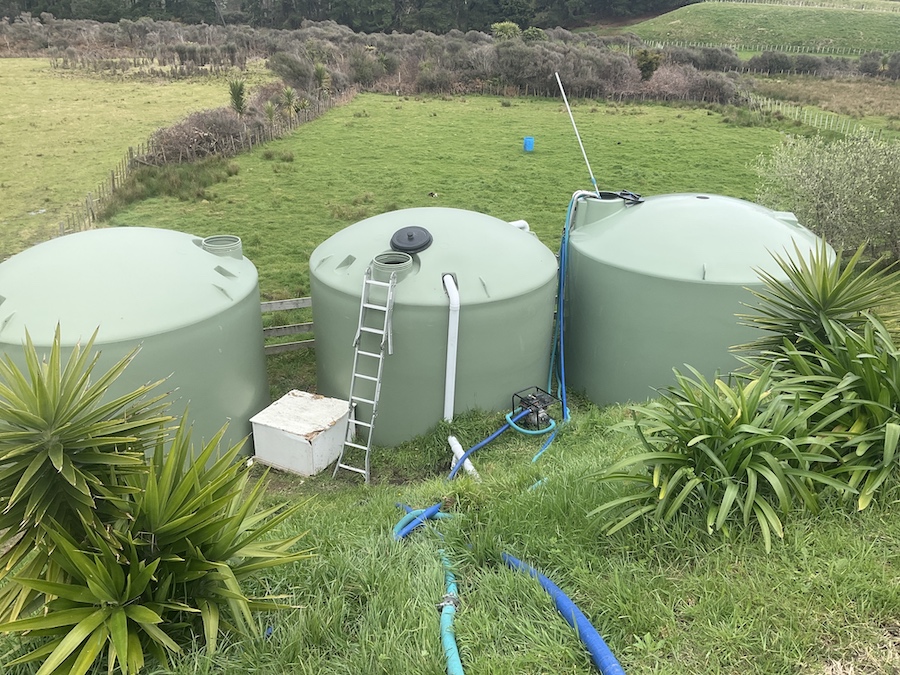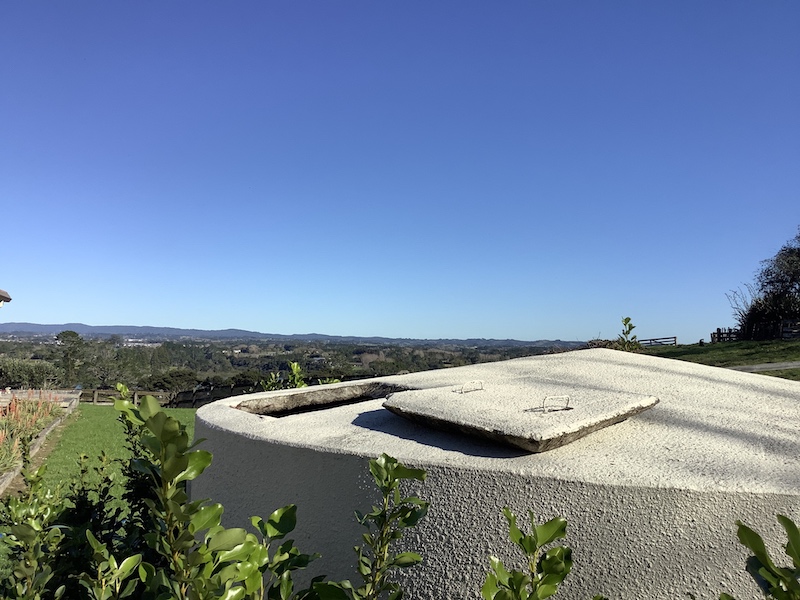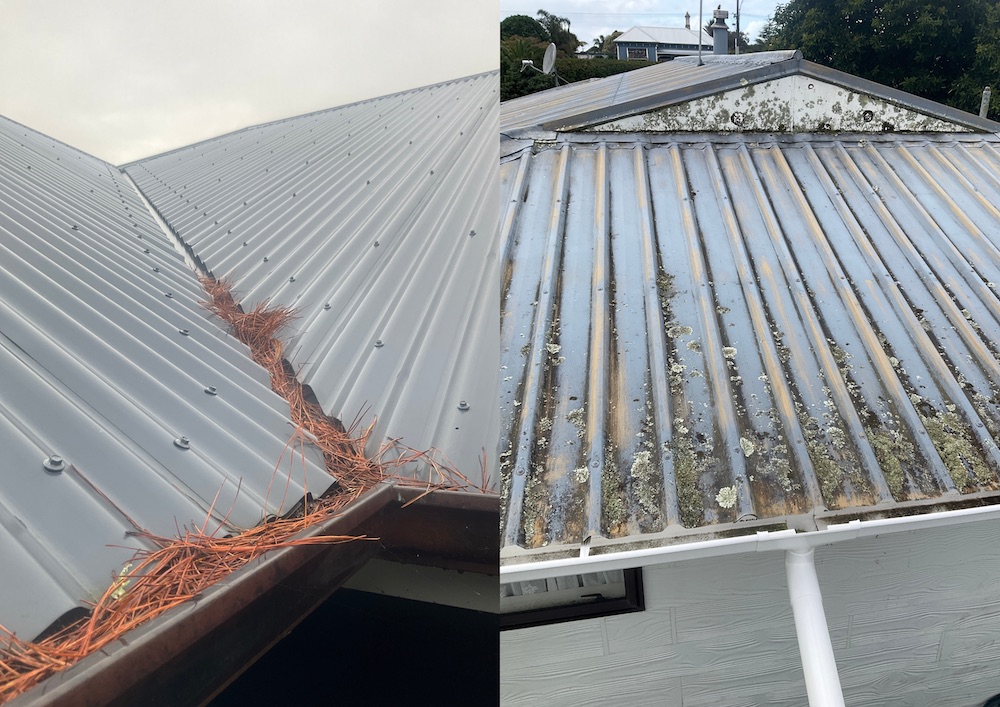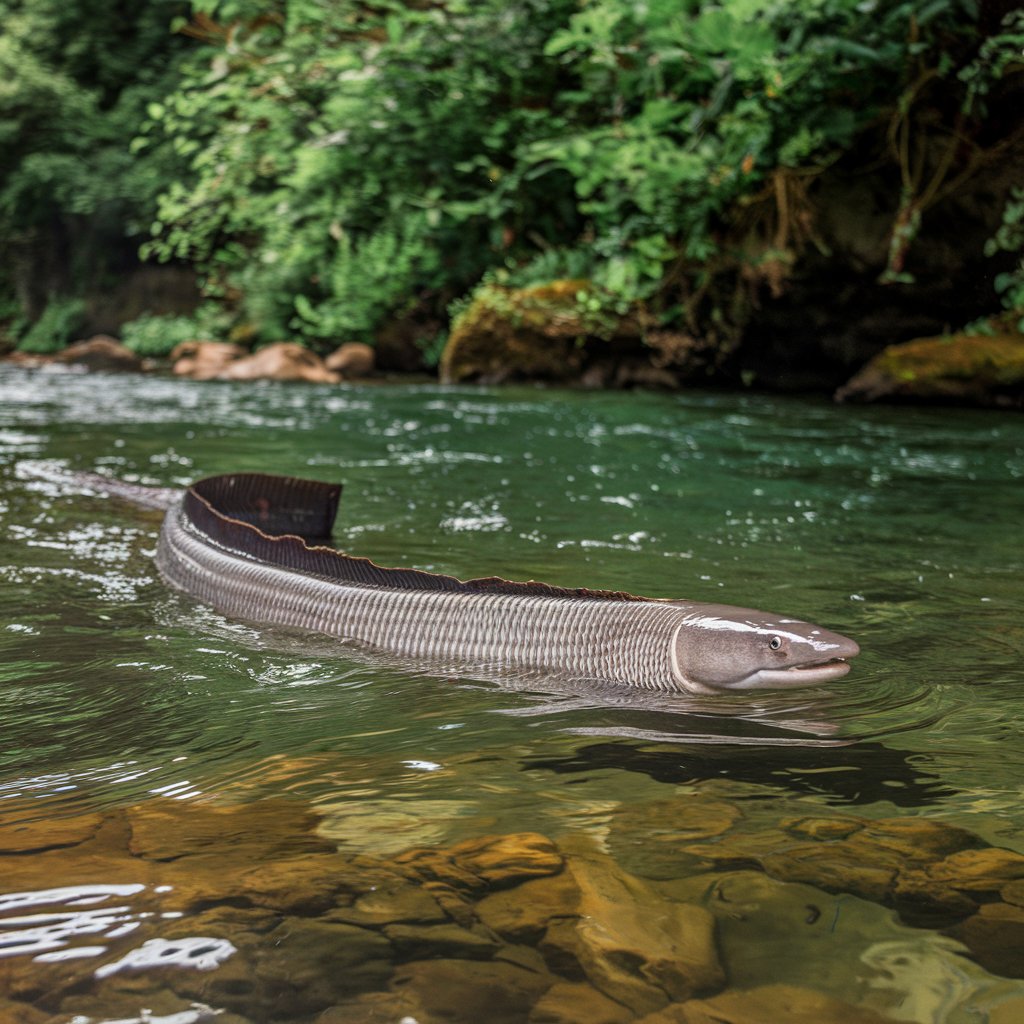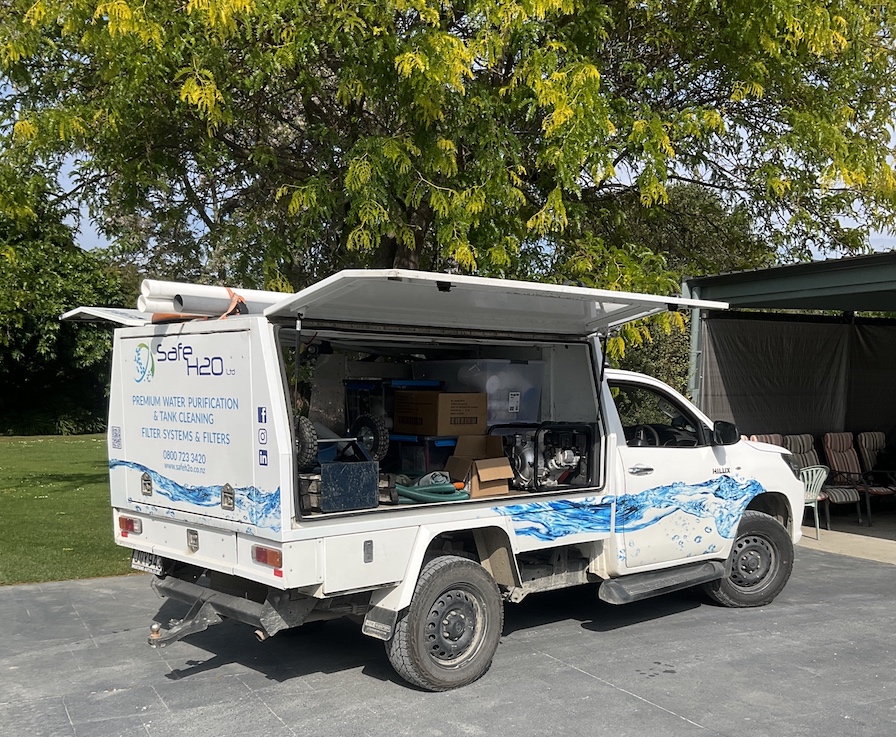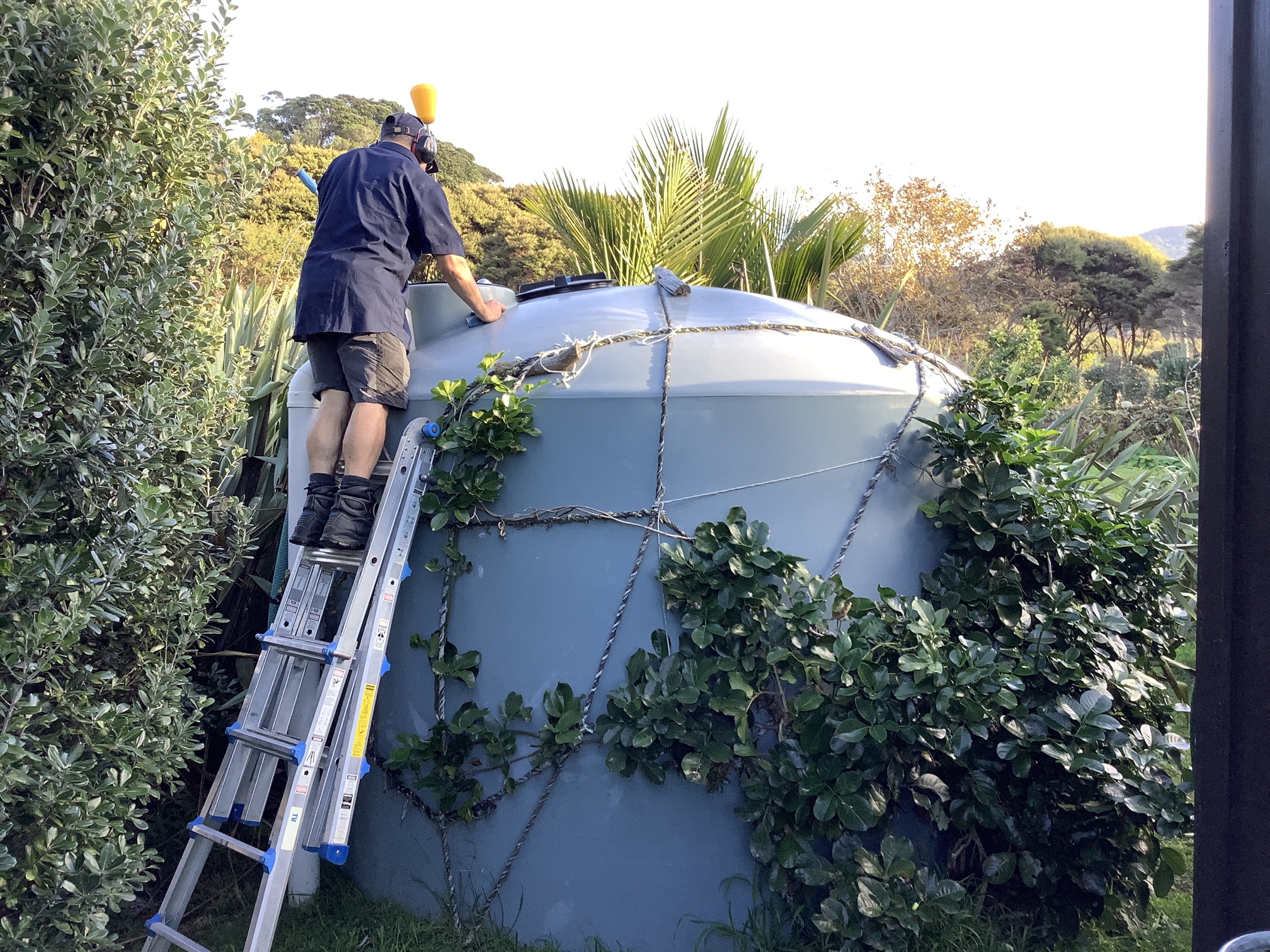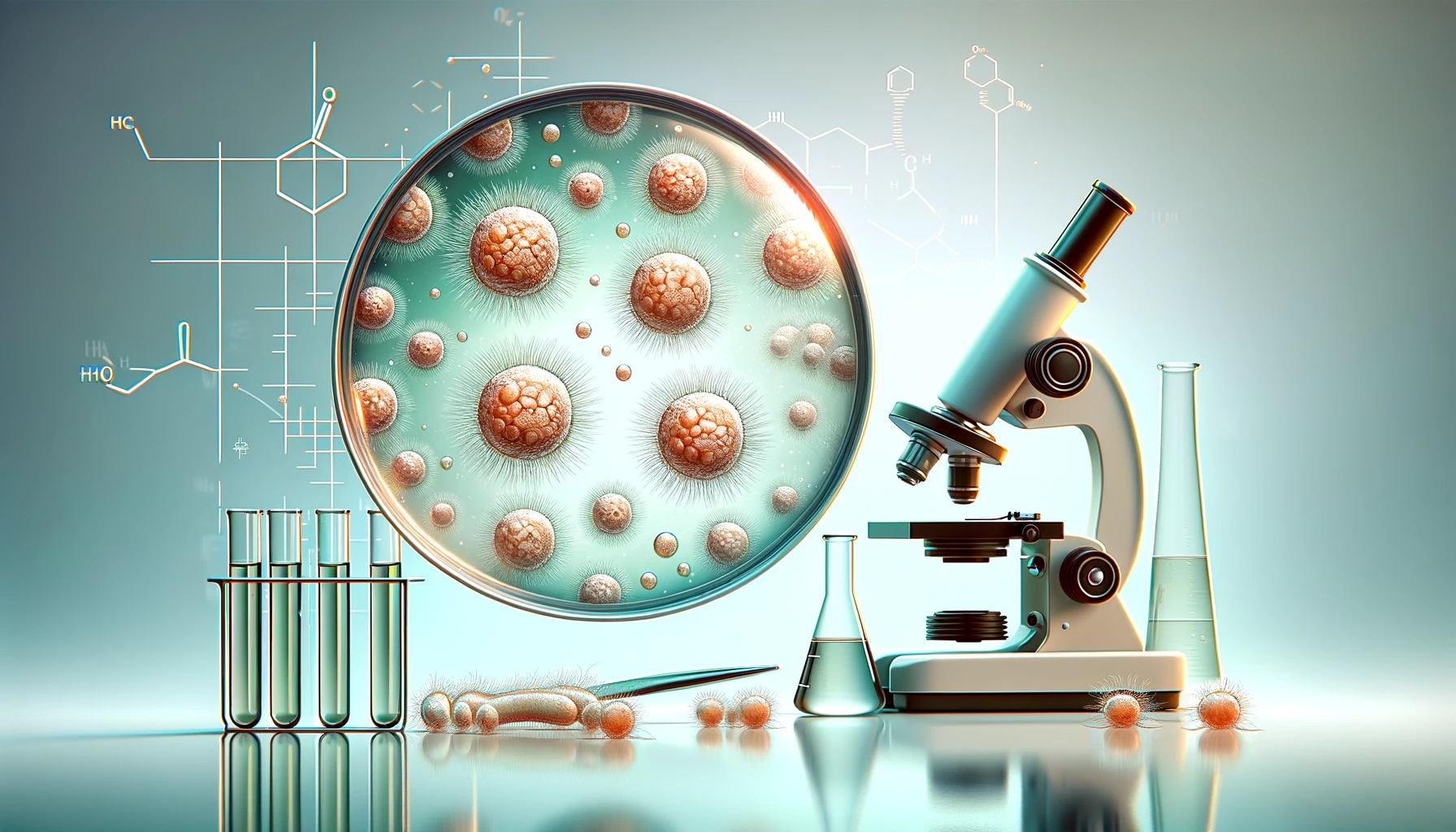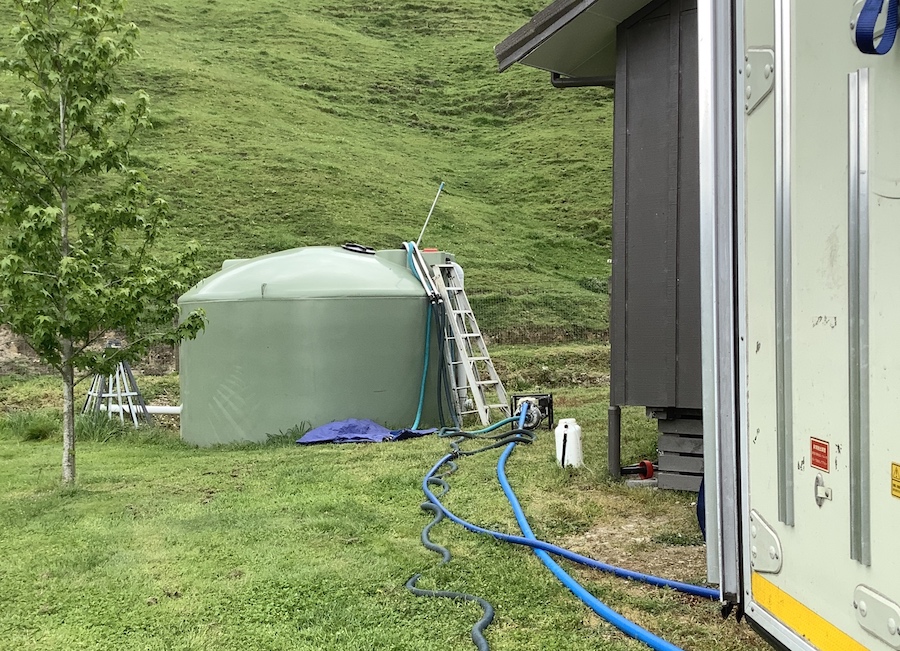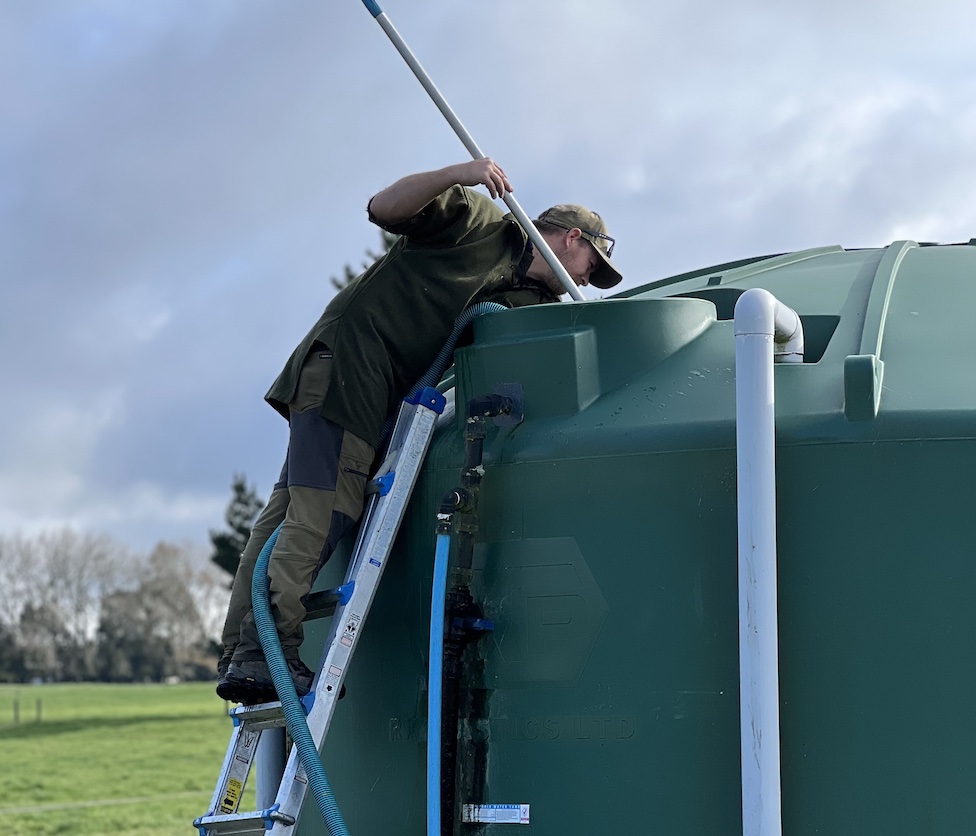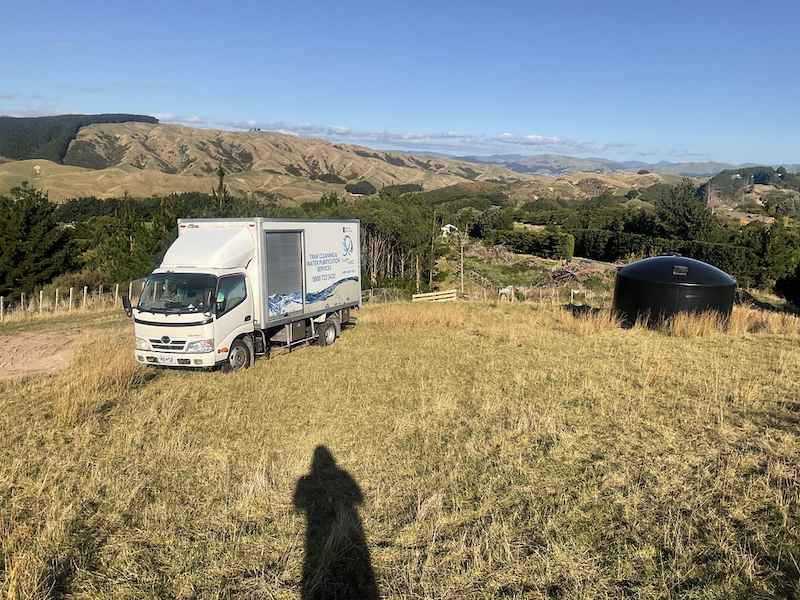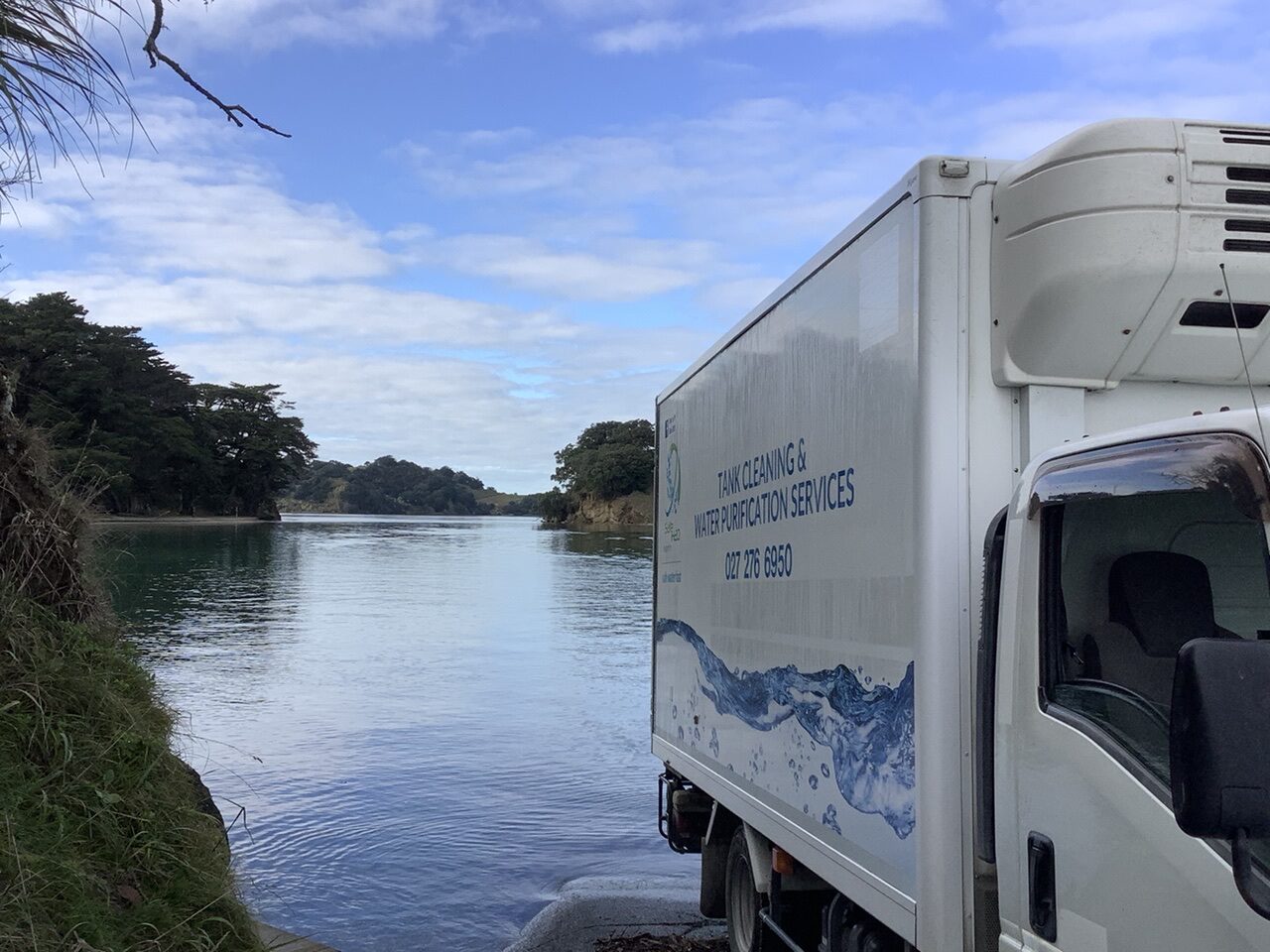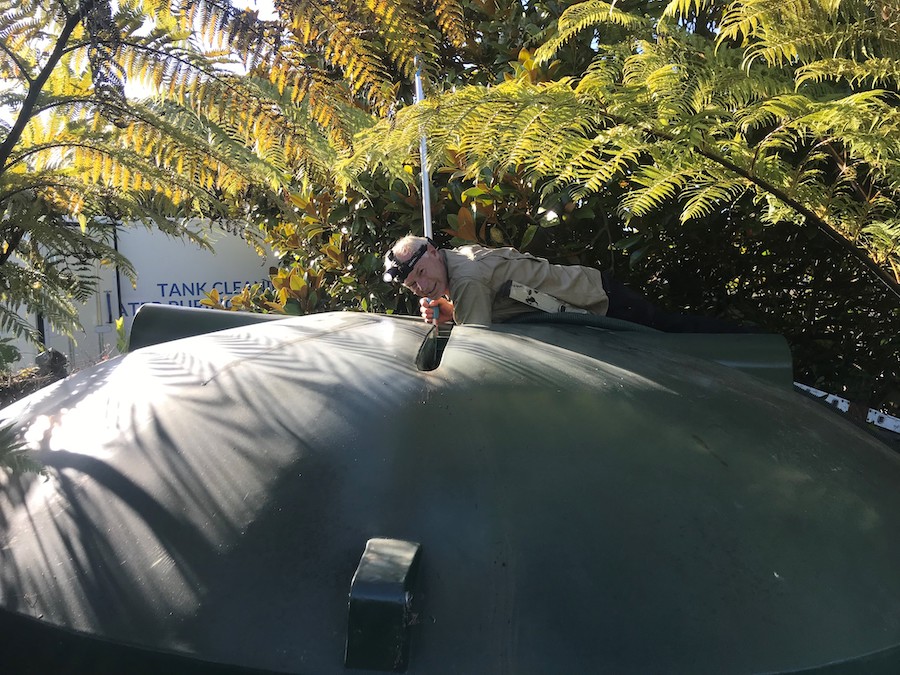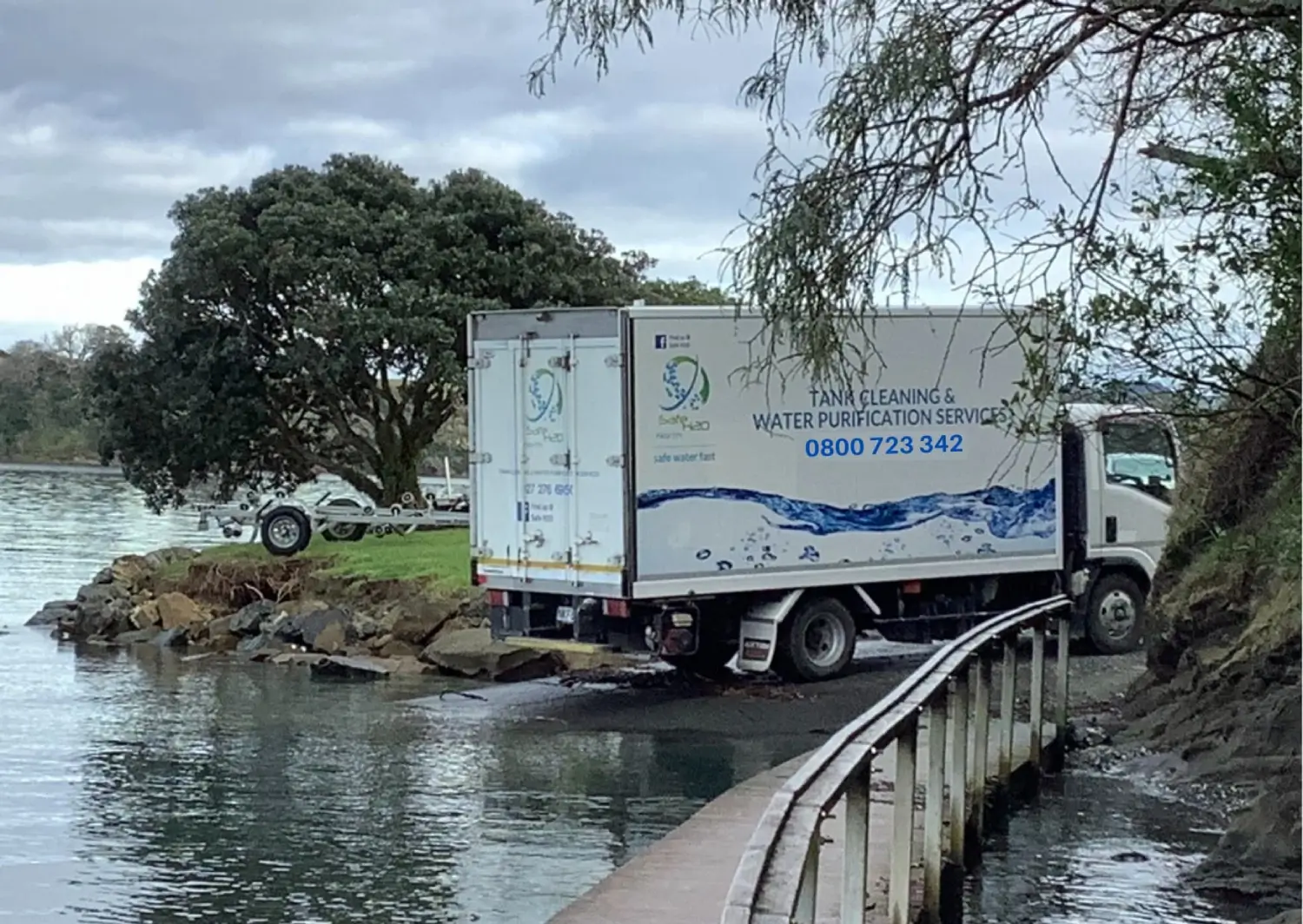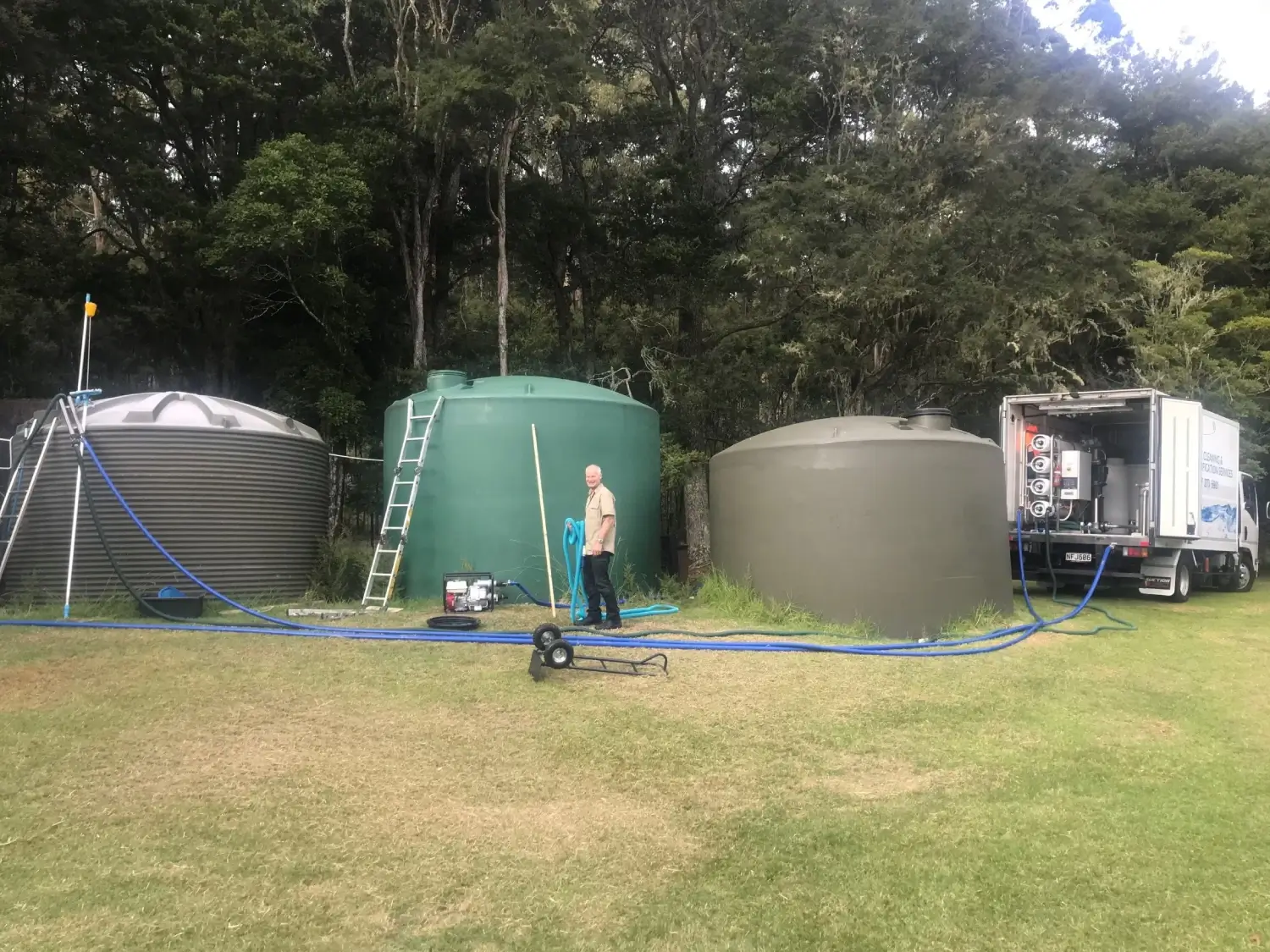UNDERSTANDING FILTRATION SYSTEMS: WHAT IS SEDIMENT AND UV WATER FILTRATION?
Your water source likely contains a myriad of sediments and particles, ranging from dirt and leaves to dust, sand, pollen, foliage, and beyond.
Sediment filtration is the first line of defence in your water purification process post tank, typically filtering out anything larger than 1 micron.
UV filtration then acts as the second line of defence, targeting and neutralising any harmful and smaller microorganisms e.g. E-coli, that may still be present in the water.
Sediment filters work by forcing the water through a physical barrier that traps the sediment in the filter material but allows the water to pass through.
They remove sediment and debris particles that can be caught by their micron-rated capacity – the lower the micron of the filter the finer the material removed.
These filters also help eliminate turbidity from water. Turbidity is the murkiness in water caused by a large number of suspended solids in the water.
These systems are placed after the pump between the water tank and the property, usually by the tank, under your property, or in the garage. This ensures the water is filtered before entering the property where it is used.
WHAT FILTRATION SYSTEM IS RIGHT FOR ME?
If your water is only used for laundry and/or toilets, a standard sediment filtration system is usually sufficient to remove dirt, debris, and other particles from your water supply.
If your water is used for drinking, cooking, showering, hand washing we strongly recommend installing both a sediment filter and a UV filter.
The sediment filter captures larger sediment materials, while the UV filter eliminates harmful microorganisms such as E-Coli, ensuring your water is safe to drink.
Bacteria such as E-coli are smaller than 1 micron and hence the need for UV to neutralise them.
Typically, dual sediment filters are installed. First, a higher micron filter (e.g. 20 micron) to remove larger sediment, followed by a 1 micron filter to remove finer sediment.
House filters generally do not go below 1 micron, as doing so can negatively impact household water pressure.
In some cases, a third filter is added — usually a carbon filter — to help remove odour and colour e.g. tannins from decomposing leaves, from the water if required.
Choosing the right size for your water filtration system is essential for optimal performance.
Generally, there are two common sizes of filter cartridges: 10 inches and 20 inches.
- 10-Inch System: Ideal for homes with one bathroom. This size efficiently meets the water filtration needs for smaller households while maintaining good water pressure.
- 20-Inch System: Recommended for homes with two or more bathrooms. This larger system provides increased filtration capacity and maintains adequate water pressure for higher demand.
Both 10-inch and 20-inch systems can come in single, dual, or triple housing configurations, allowing you to choose the level of filtration that best suits your household’s needs.
Ultimately, the best choice depends on your household’s water source, surrounds, and water usage.
Benefits
- Sediment filters act as a barrier, trapping a myriad of sediment and organic matter including dirt, leaves, dust, pollen, and other material, as the water travels through the barrier.
- Works in tandem with UV filtration, by removing sediment that a pathogen could attach to or hide behind to avoid exposure to the UV light
- Hassle-free, requiring only periodic replacement of filter cartridges, typically every six months.
Maintenance and Servicing
- Sediment filter replacements are required every 3, 6, or 12 months. This can differ depending on the water source, surrounding environment, water usage, and condition of your water tank.
At Safe H2O we offer customised filtration solutions for our customers. To learn more about the services we offer, click here to see the filtration systems our team supplies and install.
UNDERSTANDING UV FILTRATION
UV (Ultraviolet) filtration uses UV light to disinfect your water continuously. As your water passes through a stainless-steel chamber, the UV light kills any pathogens within the water.
Your water source may contain pathogens like bacteria, viruses, and protozoa. These harmful microorganisms are typically smaller than 1 micron and therefore, will pass through any sediment filters.
However, the installation of an ultraviolet disinfection bulb (UV) will provide an effective solution, by killing and/or neutralising 99.9% of all pathogens.
Importantly, UV filtration systems need to be used in conjunction with sediment filtration. If the sediment isn’t removed, it can shield the pathogens from the UV light as they pass through the UV chamber.
This coupled with regular tank cleaning to reduce the sediment build up in your water tanks also allows the filter system to work to its optimum at all times.
Benefits
- UV filtration uses UV light to disinfect your water continuously providing ongoing protection
- Erases harmful bacteria that are narrower than 1 micron and can evade sediment filters.
- Hassle-free with UV Bulb replacements required every 12 months.
Maintenance and Servicing
- UV Bulb replacements are required approximately every 12 months (Annually)
- UV filter systems require a power source and use circa $100 – $120 of electricity per annum to operate. This does vary as the price of electricity fluctuates!
If you have more questions about filtration systems, be sure to check out our FAQs Page HERE.
REGULAR WATER TANK CLEANING
It’s important to note that it’s still essential to regularly clean your water tank even if you have a filtration system.
Filters are efficient at removing sediment from the water after it leaves the tank, but they don’t prevent the tank itself from accumulating sediment and becoming contaminated.
Over time, sediments, pathogens, and other residues can accumulate in the tank, leading to sediment in solution, microbiological contamination, unpleasant tastes and odours, and potential illnesses.
Sediment accumulation can reduce the effectiveness of your filtration system and potentially shorten its lifespan.
Regular tank cleaning is essential, as it preserves water quality and ensures that your filters operate efficiently, working together to provide clean and safe water.
Summing Up . . .
Investing in a sediment and UV filtration system significantly improves the quality of your tank water, ensuring it is clean and safe for you and your family.
By installing a combination sediment UV filtration system and regularly cleaning your water tank, you can enjoy peace of mind knowing that the water you drink is clean and safe at all times.
Interested in a personalised filtration system for your water tank?
Contact us today for expert advice tailored to your needs!
Concerned about nitrates in your water, and want to know how to get rid of them?
In this blog, we'll explore these frequent water tank problems and provide practical solutions to address them effectively
Smoke and soot can contaminate NZ water tanks. Learn how it happens, the health risks, and Safe H2O’s expert tips for cleaning and prevention.
This comprehensive guide examines the benefits and drawbacks of DIY and professional water tank cleaning, enabling you to make the best choice for your home.
Winter’s cooler weather might not have you thinking about your water tank - but it should.
Whether you’re collecting rainwater, drawing from a bore, or tapping into a stream, your water tank is the heart of your...
Whether you’re collecting rainwater, drawing from a bore, or tapping into a stream, your water tank is the heart of your...
How Possums, Rodents, and Birds Get into Your Water Tank – and How to Keep Them Out When thinking about water quality, …
What’s in Your Water? Common Contaminants in NZ Drinking Water Tanks Whether your water comes from rainfall, a bore or a nearby …
Water Tank Cleaning Myths Debunked When it comes to maintaining clean and safe water in your tank, there can be a bit …
Autumn Water Tank Care Tips: Preparing for the Seasonal Change As the crisp air of autumn rolls in, it’s time to think …
Water Tank Cleaning: A Comparison of Traditional vs. Our Innovative Method When it comes to cleaning your water tank, Safe H2O cleans …
UNDERSTANDING FILTRATION SYSTEMS: WHAT IS SEDIMENT AND UV WATER FILTRATION? Your water source likely contains a myriad of sediments and particles, ranging …
Water Tanks 101: A Beginner’s Guide to Clean, Safe Water for Your Property Water tanks are an essential resource for those on …
What can I do before water enters my tank to help minimise my risks? Spring or surface water (streams) will usually be …
When it comes to maintaining a healthy rainwater fed tank, one of the most overlooked aspects is the cleanliness of your roof and gutters.
Flush Caps, Leaf Diverters, and More: Methods to Help Protect Your Water Supply When it comes to maintaining a clean and safe …
In the realm of curious misconceptions, one fascinating myth suggests that eels clean water tanks. While this idea captures the...
Why having ‘Immunity’ to Bad Tank Water is a Bad Thing When it comes to maintaining a healthy home, clean water is …
Safe H2O Collaborates with Isaac’s Plumbing, Pumping and Electrical Here at Safe H2O, we aim to provide exceptional advice, service, and support …
How Often Do New Zealand Schools Need to Clean Their Water Tanks? Here in NZ, managing water supplies, including water tank maintenance …
What is Cryptosporidium and How to Keep Your Water Safe What is Cryptosporidium? In simple terms, Cryptosporidium is a tiny parasite that …
Why you should use a Water Tank Cleaning Specialist Well maintained water tanks are the backbone of clean water storage and supply …
Guarding Against E. coli: Essential Strategies for Ensuring Safe Water Tank Systems Water tanks are an essential source of clean drinking water …
5 Top Reasons to Keep Your Water Tank Clean in New Zealand Cleaning your water tanks is something that’s probably not always …
Autumn Alert: Why Now is the Perfect Time to Clean Your Water Tank As the autumn leaves are about to fall and …
What are my Legal Obligations for water tank cleaning in New Zealand? Taumata Arowai is the new Water Services Regulator for Aotearoa …
Top signs your water tank needs cleaning – Don’t ignore these red flags Your water tank is a vital component of your …
How Often Should I Clean My Water Tank in New Zealand? If you are one of the thousands of New Zealanders with …
The Risks of Cleaning Your Water Tank with Janola or Household Bleach Should you use Janola to clean your water tank? Here …
12 Ways to Save Your Tank Water Worried about your water tanks running empty? Rainfed tank water is a limited supply and …
How much does it cost to clean my water tank? The cost of cleaning a typical New Zealand water tank depends on …


